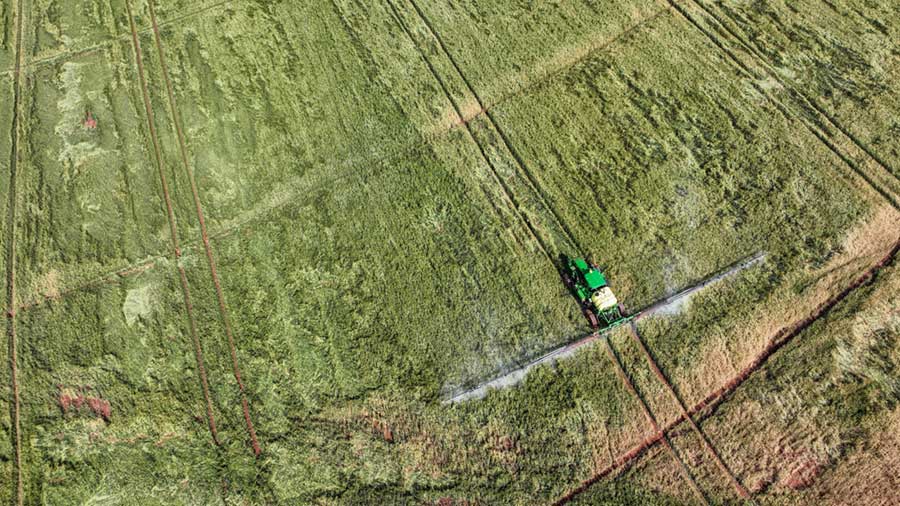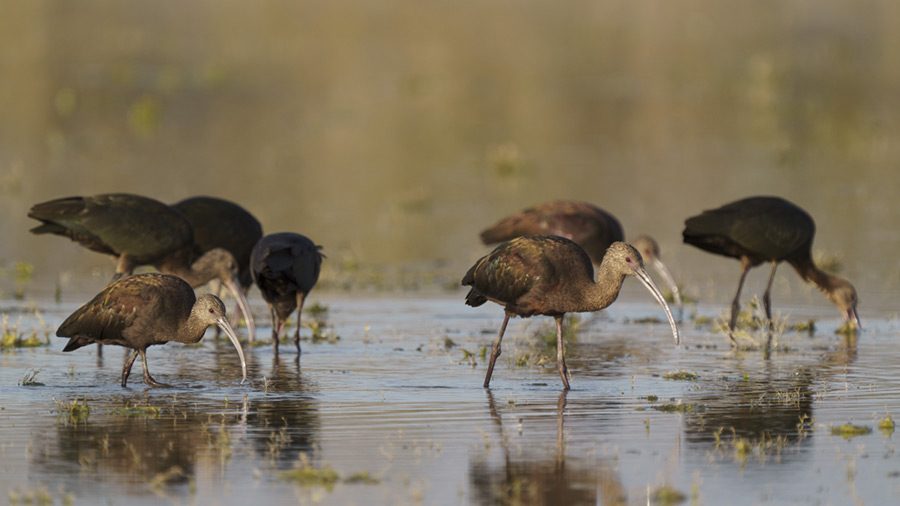Every drop counts: 6 facts you should know about water use in agriculture
Key Takeways
- Agriculture accounts for 70% of global freshwater use — making water stewardship essential to a resilient food system.
- Smart water solutions support climate resiliency, biodiversity, farmer livelihoods and more.
- Regenerative agriculture is key to driving impact at scale. In 2024, Cargill restored 38 billion liters of water, with 33 billion liters coming from regenerative agriculture practices.
Every time you eat — whether it’s a simple salad or a hearty steak — you’re using water.
Not just the water in your drink, but also the gallons of water used to grow the food on your plate.
Agriculture and water use have a strong connection. As someone who works in sustainability for a food and agriculture company, I see this interplay every day.
Water is a limited resource. As the global population grows, the demand for water will only increase. This makes the use of water in agriculture not only an environmental issue, but also a food security issue.
At Cargill, we see water stewardship as central to building a more resilient food system. With our global scale and partnerships across the supply chain, we can help bring practical solutions to farmers, communities and customers alike.
Here are six important facts about how agriculture uses water and what we’re doing to make every drop count.
1. Seventy percent of the world’s water is used for agriculture

Yes, you read that correctly.
Agriculture accounts for nearly 70% of all water used globally, according to the Food and Agriculture Organization. This water use is essential for growing the crops and raising the livestock that feed the world.
But it also highlights the importance of using water in agriculture efficiently and responsibly. As global water resources become increasingly stressed, it’s more important than ever to find ways to protect and restore water without compromising food production.
What we're doing about it: Our approach goes beyond our own operational footprint to the communities where we operate and where we can have the greatest impact: our agricultural supply chains, which account for more than 90% of our water footprint. We work with farmers, ranchers and other partners across our value chain to develop and scale agricultural solutions, such as regenerative agriculture, to help agriculture continue meeting global food needs while using water more sustainably.
2. Water and climate change are strongly linked

Water scarcity is becoming a bigger problem worldwide, especially as climate change leads to more droughts and floods.
Climate change affects where, when and how much water is available. These impacts vary by region and can harm the health of people and ecosystems. For example, only 0.5 percent of the Earth’s water is usable freshwater — and climate change threatens to shrink that supply. On top of that, about 2 billion people lack access to safe drinking water. About half the people in the world have faced severe water scarcity.
The agriculture industry, which relies on steady water supplies, is at the center of this challenge. Droughts can dry out crops, while floods can wash away soil, making the land less useful for future planting.
What we're doing about it: We’re partnering with the Soil Health Institute (SHI) on a three-year partnership to promote water stewardship within agricultural supply chains. This partnership will equip farmers, conservation planners and sustainability experts across North America with tools to enhance drought resilience, improve soil health and encourage more efficient water use. Both Cargill and SHI are committed to ensuring free, fair and equitable access to project tools and resources, facilitating widespread adoption and benefits.
3. The agriculture industry depends on clean water

Yes, water is the foundation of agriculture. But not just any water will do. The quality of water directly impacts the health of crops, livestock and the entire agricultural ecosystem.
Clean water is essential for healthy animals and safe food. Polluted water can lead to unsafe products — and harm the environment and communities that rely on these water sources. In short, clean water helps keep communities thriving and contributes to the production of safe, healthy food.
What we're doing about it:
- In Australia, we’re helping canola growers adopt sustainable agriculture practices that help contribute to improved water quality. These practices include responsible nutrient management, which can help reduce the need for fertilizers, minimizing the risk of water contamination from runoff into local lakes and streams.
- In the U.S., we’re partnering with Ducks Unlimited to protect North America’s wetlands, including the Ogallala aquifer. That includes working with farmers like Craig Drees to restore degraded wetlands known as “playa habitats” and protect natural resources. Craig and his family are working with the United States Department of Agriculture and Ducks Unlimited on water conservation projects that will help restore the natural flow of water on the landscape, create habitats benefiting waterfowl and wildlife, and enhance groundwater filtration as it flows through the aquifer.
4. Healthy soils are key to good water management

When it comes to using water wisely, healthy soils are one of agriculture’s best friends. They act like sponges, soaking up and storing water. This makes farms more resistant to drought and reduces the need for extra watering, which conserves water and can improve crop yields.
Regenerative agriculture practices, like cover crops and reduced tillage, play a vital role in improving soil health. Cover crops protect the soil and prevent erosion, while reduced tillage keeps the soil intact and maintains its moisture and structure. Helping farmers adopt these practices is essential for protecting and restoring water in agricultural supply chains and local communities.
What we're doing about it:
- In Cargill’s fiscal year 2024, we helped increase water supplies in our supply chains by approximately 38 billion liters – with 33 billion of those liters resulting from regenerative agriculture initiatives.
- We’re working with farmers like Martin Ferry, who is a part of our Cargill RegenConnect® program in France. After just a year of working with Cargill RegenConnect to implement regenerative practices such as reduced tillage, Martin noted he was already starting to see an impact, particularly on the water-holding capacity of the soil.
“We had a very wet year, and can see that the soil is less eroded. We make fewer ruts, we have a soil that is much more alive,” Martin says. “I see a lot more wildlife, with ladybugs and ground beetles in my plots. In a wet year like this, it is much more notable.”
5. Water plays a vital role in sustaining biodiversity

Water is closely linked to biodiversity, the variety of life in an area. Healthy water systems support thriving ecosystems, and those ecosystems in turn sustain agriculture: pollinators like bees support crop yields, and wildlife habitats help maintain water quality across landscapes.
Agricultural practices like rotational grazing can not only sequester carbon but also help safeguard water resources and enhance biodiversity. At the same time, local projects such as wetland restoration strengthen water systems and biodiversity in water-stressed regions that are critical to food and agriculture supply chains.
What we're doing about it: We’re working with Global Water Challenge to support Audubon’s Gilmor Sanctuary, revitalizing a portion of the 3,600 acres of wetlands along the Great Salt Lake in the U.S. This project not only protects water resources but also creates diverse, healthy habitats for shorebirds and other wildlife. It includes removing invasive species, planting native grasses and involving volunteers in restoration activities — all of which contribute to a healthier ecosystem.
6. Better irrigation systems can help improve water use

Irrigation is the process of supplying water to crops to help them grow. Irrigating crops is crucial for agriculture, especially in areas where rainfall is scarce or unpredictable.
Innovations in irrigation systems are changing how and when farmers water their fields. Efficient irrigation techniques, like drip irrigation and advanced scheduling, can help improve crop yields while saving water use and costs.
What we're doing about it:
- We’re partnering with Goanna Ag to introduce precision irrigation to cotton fields in the Mississippi Delta. This innovative technology combines sensors, satellite imagery, and crop data to help farmers make more informed decisions about when and how much to irrigate — aiming to optimize crop yields, reduce water withdrawals and lower operational costs. In 2024, participating farmers achieved over 6% higher water productivity (measured as yield per volume of water applied) and used at least 10% less water per acre. These improvements not only help farmers reduce costs and optimize yields, but also contribute to stronger, more resilient supply chains for our customers.
Cargill’s global water ambition
At Cargill, taking care of water is essential to sustainably and responsibly produce the food the world needs for the future. We’re working to address water challenges through smart solutions and teamwork, focusing on both immediate improvements and long-term sustainability.
By 2030, our goals are to:
- Implement water stewardship practices at all 68 priority facilities in our operations.
- Enable restoration of 600 billion liters of water and reduction of 5,000 metric tons of water pollutants in water-stressed regions.
- Enable improved access to safe drinking water and sanitation, reaching 500,000 people in priority communities.
As of fiscal year 2024, we’ve made meaningful progress against these goals: averaging 85% implementation of water stewardship practices at our priority facilities, helping restore 38 billion liters of water and reducing water pollutants by 297 metric tons, and reaching more than 160,000 people with improved access to safe drinking water and sanitation.
By advancing solutions that improve water availability, quality and access, we are helping agriculture adapt to challenges today while building a stronger, more resilient food system for tomorrow.
Learn more about water sustainability at Cargill.

